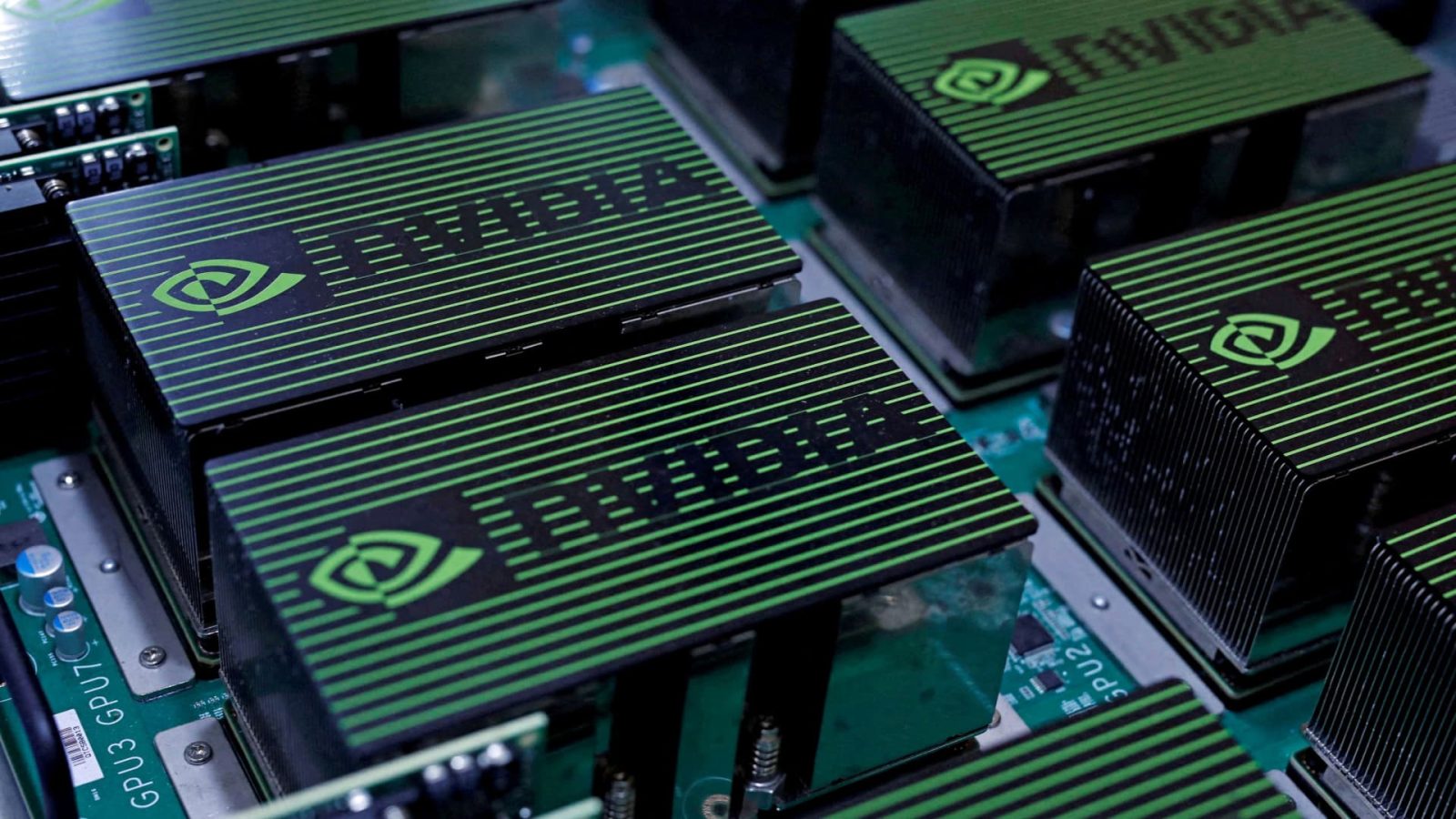Nvidia ‘s (NVDA) new disclosure on artificial intelligence chip sales to China is only moderately comforting, as questions about the world’s second-largest economy as a viable marketplace have yet to be resolved. In a securities filing Tuesday, Silicon Valley-based Nvidia said the U.S. government’s new restrictions on AI chip exports are “effective immediately,” instead of mid-November as first expected. Nvidia did not say what prompted the U.S. to move up the date of implementation. The Department of Commerce declined to comment. Still, the world’s most valuable semiconductor company assured investors that the sooner-than-expected implementation will not meaningfully impact its near-term financial results because demand for its AI chips is so strong in the rest of the world. That’s essentially the same assessment Nvidia offered when the tighter regulations were announced on Oct. 17 . “This is a problem. China is important for [Nvidia’s] long-term prospects,” Jim Cramer said Tuesday, suggesting the U.S. government and the company need to “have real talks” to search for a policy solution that enables Nvidia to sell its AI chips to consumer-focused Chinese tech giants, such as Alibaba . Jim acknowledged the Biden administration’s concerns about cutting-edge AI technology falling into the hands of the Chinese military. That is Washington’s stated reason for the export controls. “I would love it if they made a deal with China, and the [U.S.] government endorsed it, but not if it’s going to hurt” the U.S. militarily, he added. China questions The latest round of export controls limits Nvidia’s ability to sell multiple data-center chips to Chinese customers, including two products — the A800 and H800 — designed to comply with the Biden administration’s initial restrictions in 2022. The A800 and H800 are modified versions of Nvidia’s most cutting-edge AI chips — the A100 and H100 — which can be used in data centers to train large language models like the one powering OpenAI’s ChatGPT. Sales of another Nvidia chip known as the L40 – specialized for graphics rendering during the day-to-day use of AI models – are also impacted by the latest U.S. restrictions. Chinese customers have historically accounted for 20% to 25% of Nvidia’s data center segment, which makes up the majority of the company’s overall revenue. In its most recent quarter, Nvidia said China was within the historical range. Therefore, it could be another quarter or so before we see how the new China export rules impact that part of the business and whether the company will make up for it elsewhere. Nvidia is set to report its fiscal 2024 third quarter (three months ended in October) on Nov. 21. NVDA YTD mountain Nvidia’s year-to-date stock performance. Nvidia’s companywide growth has taken off in recent quarters, amid a surge in interest and investment in AI. The company commands a dominant position in the market for chips used in AI model training. The release of ChatGPT less than a year ago helped spark this current boom in Nvidia’s business, and analysts widely believe it’s still in the early innings globally. In other words, Nvidia is likely to see meaningful growth ahead, even with a diminished China business. But the question that still lingers in our minds is whether that growth can be substantial enough to meet the lofty, multiyear expectations that became baked into Nvidia’s stock price in recent months. At least three Wall Street analysts lowered their price targets on Nvidia last week , though their new outlooks still imply robust gains ahead for the stock. New processor market? Nvidia, meanwhile, has been exploring a new market that could contribute revenue: central processing units (CPUs) for personal computers, according to Reuters . While we see this as unlikely to be a financial needle-mover for Nvidia in the short run, it’s an intriguing development for the tech industry more broadly. Nvidia made its name designing graphics processing units (GPUs) to render images and videos in PCs, and those chips remain popular today, especially among the gaming community. At a high level, the CPU is the primary brain of a computer, while the GPU handles more specialized tasks. Now, Nvidia is making a foray into developing CPUs to run Microsoft ‘s (MSFT) Windows operating system, Reuters reported Monday. Microsoft has encouraged Nvidia’s effort to develop the CPUs, which would utilize technology from Arm Holdings (ARM), according to the news organization, with the chips available as early as 2025. Nvidia already uses Arm’s architecture in the data-center CPU portion of its Grace Hopper superchip . Historically, however, the PC market has been dominated by CPUs that run on a different instruction set, which was developed and used by Intel (INTC) decades ago. Advanced Micro Devices (AMD) uses it too. Notably, in the same report, Reuters said AMD also is working on Arm-based CPUs, which are seen as more power-efficient than the current chips. AMD is in the Club’s Bullpen, our watchlist of stocks under consideration to join the portfolio. The idea that Nvidia would chase the personal computer CPU market isn’t a shock — and in our minds, it’s not a reason to buy the stock here. Based on the Reuters report, the potential boost to revenue wouldn’t arrive for more than a year, and it’s unclear what Nvidia’s market share would look like then. Bank of America estimated the total addressable market for PC CPUs to be $35 billion in 2025, with the architecture Intel and AMD currently use holding 88% share and Arm-based silicon holding 12%. Club holding Apple (AAPL) is responsible for most Arm-based CPUs in PCs today. Qualcomm (QCOM) has been developing a PC CPU using Arm technology, as well. Another reason for tempered enthusiasm: The gross margins on PC CPUs are typically smaller than Nvidia’s data-center chips, a market in which the company has pricing power. In the three months ended July 30 (fiscal 2024 second quarter), Nvidia’s companywide adjusted gross margin stood at 71.2%, up from 66.8% in the quarter prior driven by higher sales of data-center chips. Bottom line Nvidia’s potential foray in PC CPUs is a development that we’ll continue to monitor, but it doesn’t put to rest longer-term questions around China. (Jim Cramer’s Charitable Trust is long NVDA, MSFT, AAPL. See here for a full list of the stocks.) As a subscriber to the CNBC Investing Club with Jim Cramer, you will receive a trade alert before Jim makes a trade. Jim waits 45 minutes after sending a trade alert before buying or selling a stock in his charitable trust’s portfolio. If Jim has talked about a stock on CNBC TV, he waits 72 hours after issuing the trade alert before executing the trade. THE ABOVE INVESTING CLUB INFORMATION IS SUBJECT TO OUR TERMS AND CONDITIONS AND PRIVACY POLICY , TOGETHER WITH OUR DISCLAIMER . NO FIDUCIARY OBLIGATION OR DUTY EXISTS, OR IS CREATED, BY VIRTUE OF YOUR RECEIPT OF ANY INFORMATION PROVIDED IN CONNECTION WITH THE INVESTING CLUB. NO SPECIFIC OUTCOME OR PROFIT IS GUARANTEED.
Nvidia‘s (NVDA) new disclosure on artificial intelligence chip sales to China is only moderately comforting, as questions about the world’s second-largest economy as a viable marketplace have yet to be resolved.
Read the full article here









Leave a Reply